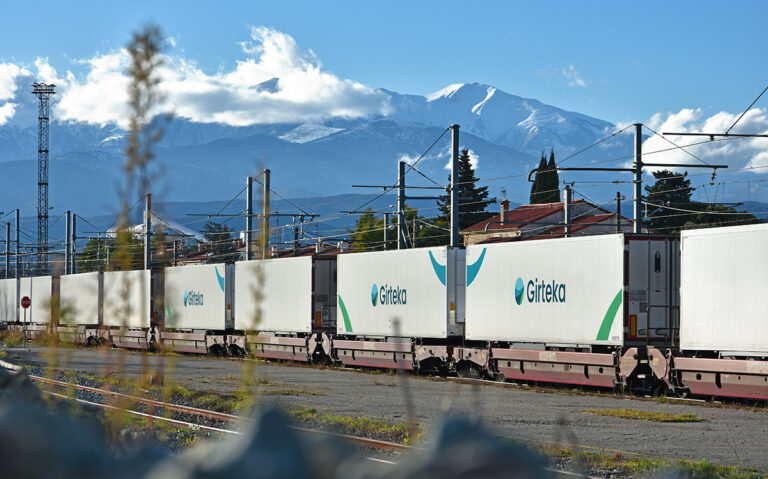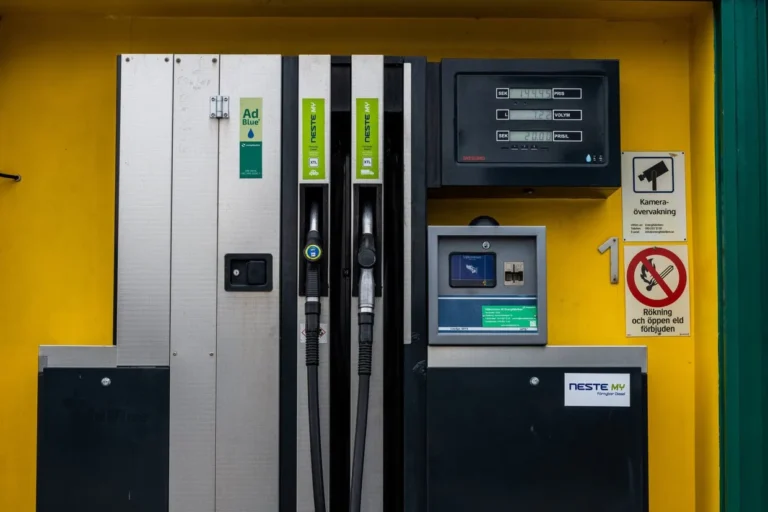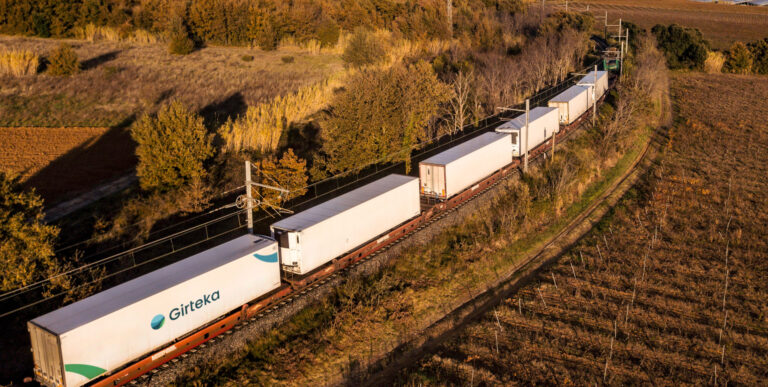Throughout the year in road freight transportation business, trucks are being moved from one region to the other, as demand fluctuates depending on the seasonality in various sectors. The most predominant are harvest-related peaks, such as shipping of olives from Andalusia, Spain, or grapes from Tuscany, Italy. This seasonality depends not only on the region but also on… the weather. When it comes to logistics and the agri-food sector, extreme weather conditions pose a risk to the viability and profitability of both farmers, producers, and logistics companies. In a severely disrupted political and economic climate in Europe, how does climate change, in the real meaning of the term, factor into the logistics industry?
The ’Hot’ Topic
When it comes to the food and agricultural industry, supply chains rely on relatively stable weather and mild temperatures in most crucial agricultural production zones. As climate change continues to escalate, the agri-food industry faces unprecedented challenges in maintaining a sustainable and efficient supply chain. Extreme weather events not only damage infrastructure but disrupt transportation networks and delay supply chain operations.
For instance, in 2019, the Economist reported that the Panama Canal was forced to reduce weight by lowering cargo capacity on ships due to drought decreased water levels. Last year saw a record rise in global temperatures and severe drought conditions in Europe, which caused transport performance to drop 10 to 30 percent on average on both Rhine and Danube rivers due to low water levels.
This summer, records are being broken again. According to the European Union’s (EU) climate monitoring service Copernicus, this June was the hottest on record. Devastating wildfires have spread in Greece, Italy, Spain, Portugal, Algeria, Tunisia and Canada, causing massive environmental and economic damage. Moreover, the World Meteorological Organization (WMO) states that this July is expected to be the hottest July and the hottest ever month on record.
What does this all mean for agri-food logistics? Changes in temperature and weather patterns directly impact crop yields and livestock. This affects production volumes and distribution schedules, demanding more flexibility and preparation by logistics companies, not only those operating on water, but also road transportation.
The Status Quo
Taking a step back to look at the current state of the market – despite the economic downturn in Europe, there are some positive signs for the road freight industry. Inflation, although still high, has started to decelerate, and supply chains remain stable. However, there is a clear decline in consumption, particularly in major European economies like Germany. This is leading to a decrease in demand for capacity, which, coupled with relative stability in the fuel market, has resulted in lower transport rates.
According to the European Commission (EC), economic growth in the EU was 3.5% in 2022. However, the forecast for 2023 suggests a slowdown, with an average growth rate of 1.00% in the EU and 1.1% in the Eurozone. The impact of persistent inflation over the past year is reflected in the year-on-year (y-o-y) consumption figures. While there has been some easing of inflation and growth in seasonally adjusted monthly consumption figures in Spain, France, and the UK, the year-on-year figures show an overall decline in average consumption.
According to The European Road Freight Rate Benchmark for Q1 2023, published collaboratively by Ti (Transport Intelligence), Upply and IRU (International Road Transport Union):
“Average seasonally adjusted monthly consumption is down year-on-year by 6% in Germany, 3.9% in France, 2.8% in Italy, 4.3% in the UK, and 14.5% in the Czech Republic. As wage growth lags behind inflation, the cost-of-living crisis worsens, reducing the appetite and ability to consume goods. This will further reduce demand-side pressure on the road freight market, allowing for further rate falls in both markets.”
A decline in production in major European economies is also clearly visible.
“Available Q1 2023 data from official sources reveal a decline in production in the UK (-0.5%), Spain (0.3%), and Poland (-0.1%), while production in France (+0.9%) and Germany (+0.5%) has grown. Inflation is eroding the demand for consumer goods, while demand for capital and intermediate goods remains steady. High interest rates will likely deter major expansions in production in 2023, limiting the pressure on rates and allowing for further rate falls,” the report continues.
Transport rates in January 2023 were 26% higher than the previous year, but in subsequent months, they fell below last year’s level. Undoubtedly, freight prices have been affected by the relative stabilization of the fuel market, as well as other factors. In June 2022, the price for Brent crude oil was record high – reaching 123 USD per barrel, as The Business Insider data shows. In April 2023, the price stood at around 85 USD per barrel – back at the pre-war in Ukraine levels. Correspondingly, at the end of April 2023, freight prices, at least on the spot market, returned to levels recorded before the outbreak of the war in Ukraine.
Since the fourth quarter of 2022, both spot and contract rates have been declining with spot prices falling more sharply.
“According to market analyses, spot rates have fallen in 87% of the freight market, although there are some exceptions on the German and French routes (…). Prices per transports achieved on the spot market fell by an average of 7.5%, which is quite a lot, and on the contract market by nearly 3%. For some carriers, this means balancing on the edge of profitability, as the level of fixed costs continues to rise,” as Market Insights ON report by Trans.eu, the report states.
As the high summer season is currently underway, it is expected that freight prices, especially on the spot market, will significantly increase, as is generally the pattern.
Along Came Climate
All seems quiet on the logistics market front for now. But let us factor in extreme weather into the high seasons for harvested produce. For instance, during spring 2023, one particular transportation route that experienced an increase in contract rates was that from the Iberian Peninsula (Spain and Portugal) to France. While contract rates across the continent dropped by an average of 2.7% in Q1 2023, the Paris-Madrid route experienced the two highest contract rate increases.

The region has been facing a severe drought for several years, resulting in a significant decrease in rainfall, which impacted agricultural yields. As a precautionary measure, importers in France have been seeking to stock up on food products in advance, leading them to import from Spain. This has led Spanish carriers to negotiate higher contract rates for food exports in their contracts.
“Consequently, freight rates for transports between Madrid and Paris increased by 4.1% (interestingly, the opposite happened on the spot market, with prices decreasing by 4.3%). Transport rates on routes from Italy have also increased for similar reasons,” the Market ON report points out.
The combination of low yields, early and delayed harvests, and low demand for road freight from French and Spanish fresh goods producers in the third and fourth quarters of 2022 resulted in reduced demand-side pressure. However, the improved harvest in Q1 2023, with production returning to normal levels, led to increased demand and competition.
“The result was greater demand pressure and competition as customers were willing to pay premiums to secure transport for Fruit and vegetable in high demand and selling for a premium price on the rest of the continent. (…) Whilst delayed harvest pushed up contract rates the outlook on this lane is reduced demand side pressure which will allow further rate falls,” according to The European Road Freight Benchmark.
In Q1 2023, more than 75% of European contract rates experienced a decline. Italian export and domestic contract rates, on the other hand, were among the few that rose. This pattern is shared among Mediterranean countries and reflects a return to normal levels of harvest following a record low and delayed harvest in the third and fourth quarters of 2022, all due to the effects of extreme weather.
“Last year, Italy faced unprecedented weather conditions, with record high temperatures and record low water levels on the river Po, which severely limited waterborne transport and irrigation. The farmers union warned of a record-low harvest, but some regions, such as Tuscany, produced better-than-expected volumes and quantities of olive oil in the winter harvest. As a result, there was greater competition for customers to secure capacity in the contract market, which added demand-side pressure to the market and pushed up rates,” the report by Ti, Upply and IRU continues.
What to Expect Next?
In July 2023, the EU crop yield outlook has been further reduced from previous expectations. Based on analysis conducted between June 1 and July 16, 2023, the most recent issue of the JRC MARS Bulletin for Crop monitoring in Europe states that the yield forecast at EU level remains at or slightly above the mediocre five-year average for most crops. The main reasons for the worsened expectations are the extremely dry and unusual conditions observed in large parts of Europe during the analysed period.
„The forecast for sunflowers suffered the strongest downward revision, to 5% below the 5-year average, mainly due to the worsened yield outlook for Romania (the EU’s main sunflower-producing country). The worsened forecast for spring barley, which was already well below the 5-year average, is mainly due to substantial downward revisions for Denmark, Sweden, Finland, and the Baltic Sea countries,” the bulletin states.
The research further indicates that with intense heatwaves in southern parts of Spain, Portugal and northern Italy, there is a risk of heat-induced sterility for flowering summer crops, which could have „potentially irreversible impacts on yields”. Meanwhile, in western parts of Bulgaria and Romania, Slovenia, Croatia and Hungary, rain surplus delayed harvesting, “potentially reducing grain quality”.
According to the EU Joint Research Centre seasonal weather forecast, as of July 14, 2023, higher-than-average precipitation levels are expected in the Mediterranean, but lower than usual for central and northern Europe, particularly for the regions around the Baltic Sea (including Scandinavia, the UK, Ireland, and Germany), where researchers are watching the build-up of a new drought.
The European Commission (EC) is thus calling for careful planning and proactive approaches, as well as tailored solutions to mitigate extreme weather impact since different regions in Europe are experiencing varying drought conditions. This will undoubtedly impact the capacity of agricultural production across the affected regions in the near future, demanding more flexibility and adaptation in terms of fleet capacity and deployment by transport operators.
To keep supply chains undisrupted, road haulage companies must now keep an eye on the weather as well, planning operations both in the short and long term, factoring in the possible changes in cargo volume, loading places, schedule and revenues, as climate change is here to stay.









